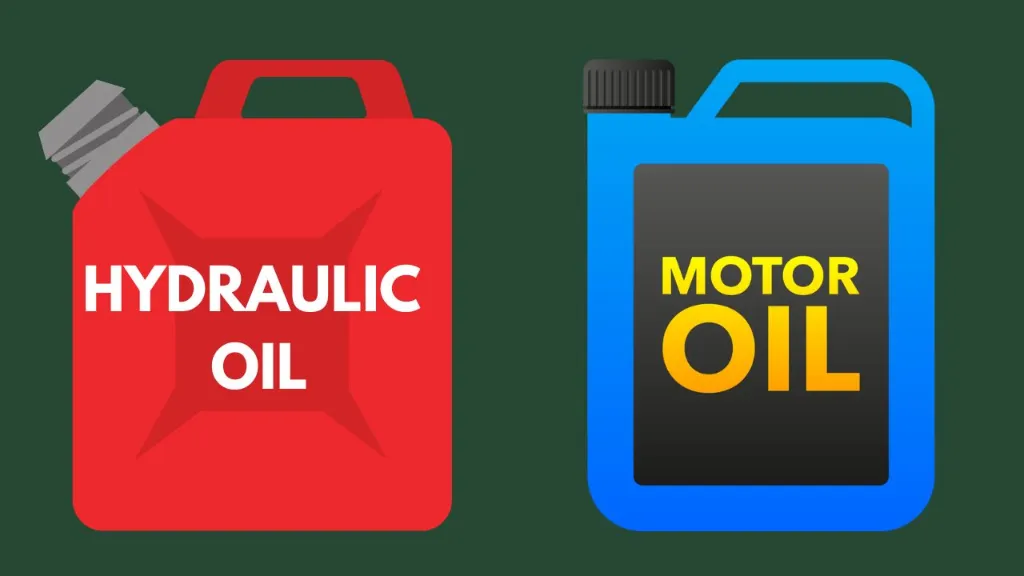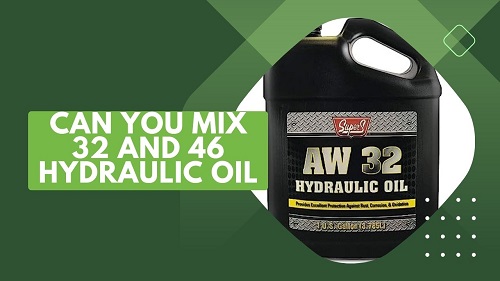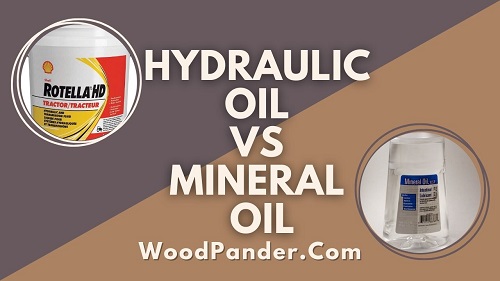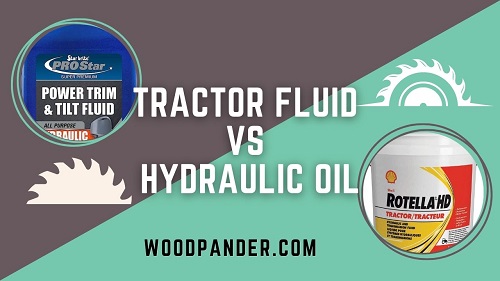Hydraulic systems are vital for numerous industries, powering heavy machinery and equipment. To ensure optimal performance and longevity, it’s crucial to use the right hydraulic oil.
However, there may be instances where you wonder if it’s acceptable to mix different grades of hydraulic oil.
In this article, we’ll explore this topic in detail and provide insights into the compatibility, potential issues, and best practices associated with mixing hydraulic oil grades.
Can You Mix Different Grades Of Hydraulic Oil
| Hydraulic Oil Grade | ISO Viscosity Grade | Temperature Range (°C) | Recommended Applications |
|---|---|---|---|
| AW 32 | ISO 32 | -20 to 50 | General purpose hydraulic systems operating in moderate temperature conditions |
| AW 46 | ISO 46 | -20 to 70 | Hydraulic systems operating in a wide temperature range and moderate to heavy-duty applications |
| AW 68 | ISO 68 | -20 to 80 | Heavy-duty hydraulic systems operating under high temperatures or in severe conditions |
| AW 100 | ISO 100 | -15 to 80 | High-pressure hydraulic systems requiring superior anti-wear properties |
| AW 150 | ISO 150 | -10 to 80 | Heavy-duty hydraulic systems with wide temperature variations and severe conditions |
| HLP 32 | ISO 32 | -20 to 70 | Hydraulic systems with high-performance requirements and wide temperature ranges |
| HLP 46 | ISO 46 | -20 to 70 | Hydraulic systems in various industries, including construction and manufacturing |
| HLP 68 | ISO 68 | -20 to 70 | Heavy-duty hydraulic systems operating under high temperatures or in severe conditions |
| HLP 100 | ISO 100 | -15 to 80 | High-pressure hydraulic systems requiring superior anti-wear properties |
| HLP 150 | ISO 150 | -10 to 80 | Heavy-duty hydraulic systems with wide temperature variations and severe conditions |
One of our articles –Tractor Fluid vs Hydraulic Oil.
Hydraulic oil grades are determined by various factors such as viscosity, additives, and performance characteristics.
Each grade is designed to meet specific requirements and operate under certain conditions. It’s essential to comprehend the significance of hydraulic oil grades and the differences between them.
Importance of Hydraulic Oil Grades
Hydraulic oil grades play a crucial role in system performance, efficiency, and equipment longevity.
They are formulated to provide the right viscosity and lubrication properties required for optimal hydraulic system operation. Using the wrong grade can lead to premature wear, reduced efficiency, and potential damage to system components.
Different Grades and Their Characteristics
Hydraulic oil grades are typically represented by numbers such as ISO 32, ISO 46, and ISO 68, indicating their viscosity at different temperatures.
The lower the number, the thinner the oil, while higher numbers indicate thicker oil. Different grades have specific viscosity ranges to cater to various operating conditions, temperatures, and equipment requirements.
Compatibility of Different Hydraulic Oil Grades
Mixing Same Brand but Different Grades
In general, it is acceptable to mix different grades of hydraulic oil from the same brand, as long as they are compatible.
However, it’s important to consult the manufacturer’s recommendations or guidelines to ensure compatibility.
Some manufacturers may provide specific guidelines for blending different grades to achieve desired properties or to adjust oil performance for specific operating conditions.
Mixing Different Brands and Grades
Mixing hydraulic oil grades from different brands is generally not recommended unless the manufacturer explicitly approves it.
Different brands may have different formulations, additives, and performance characteristics that can interact in unexpected ways.
Mixing incompatible hydraulic oils can result in poor lubrication, reduced efficiency, and potential damage to system components.
One of our articles –Can You Use Brake Fluid in Hydraulic Jack?
Potential Issues with Mixing Hydraulic Oil Grades

Reduced Performance and Efficiency
Mixing different grades of hydraulic oil can compromise system performance and efficiency. Inadequate lubrication due to viscosity mismatch may lead to increased friction, heat generation, and energy losses.
The hydraulic system may experience decreased responsiveness and overall operational effectiveness.
Increased Wear and Tear
Incompatible hydraulic oil grades can accelerate wear and tear on system components. Viscosity variations can affect the ability of the oil to create a protective film on surfaces, leading to increased friction and premature wear of pumps, valves, and other moving parts. This can result in costly repairs and downtime.
Fluid Breakdown and Contamination
Mixing incompatible hydraulic oil grades can cause fluid breakdown and contamination. Chemical reactions between different additives or formulations may result in oil degradation, reduced stability, and increased formation of sludge or varnish.
Contaminants can clog filters, impairing system performance and potentially causing component failures.
Sealing and Leakage Problems
Different hydraulic oil grades may have varying effects on seal materials, potentially leading to sealing and leakage problems. Incompatible oils can cause seal swelling or shrinkage, compromising their effectiveness and resulting in oil leaks.
This can lead to environmental hazards, reduced performance, and increased maintenance requirements.
Best Practices for Hydraulic Oil Mixing
Consult Equipment Manufacturer
Before considering mixing different grades of hydraulic oil, it’s crucial to consult the equipment manufacturer or review the manufacturer’s guidelines.
They can provide valuable insights into the compatibility of different oils and recommend suitable solutions for specific situations.
Perform Oil Analysis
Performing regular oil analysis can help assess the condition and compatibility of hydraulic oil. Analysis provides insights into oil viscosity, contamination levels, additive depletion, and overall oil health.
By monitoring the oil’s properties, potential issues can be identified early, allowing for timely preventive measures.
Properly Drain and Clean the System
If mixing different hydraulic oil grades is unavoidable, it’s essential to drain and clean the system thoroughly before introducing the new oil.
This helps minimize cross-contamination and ensures that the system is properly primed with the desired oil blend.
Label and Document the Oil Mixing
Maintaining proper documentation of the oil mixing process is crucial. Labeling the oil containers, documenting the specific grades and proportions used, and keeping a record of the mixing process helps track oil compatibility and aids future maintenance and troubleshooting efforts.
Related Questions
Can I mix ISO 32 and ISO 68 hydraulic oils?
It is generally not recommended to mix different viscosity grades like ISO 32 and ISO 68. Mixing these grades can result in inconsistent viscosity, leading to improper lubrication and reduced system performance.
What happens if I mix hydraulic oil grades?
Mixing different hydraulic oil grades can lead to issues such as inadequate lubrication, reduced performance, fluid breakdown, and contamination risks. It is best to avoid mixing oil grades whenever possible.
Are there any situations where mixing hydraulic oil grades is acceptable?
In some emergency situations, mixing oil grades may be temporarily acceptable. However, it is essential to rectify the situation as soon as possible by draining and replacing the mixed oil with the correct grade recommended by the manufacturer.
Can mixing hydraulic oil grades cause damage to the hydraulic system?
Yes, mixing hydraulic oil grades can potentially cause damage to the hydraulic system. The inconsistent viscosity and other incompatible properties may lead to increased friction, wear, and compromised system performance.
How often should I analyze hydraulic oil for contaminants?
Regular oil analysis is recommended to identify potential issues before they escalate. The frequency of oil analysis depends on factors such as system usage, operating conditions, and the manufacturer’s guidelines. Typically, analysis every six to twelve months is a good practice.
One of our articles –Can You Mix 46 And 68 Hydraulic Oil?
Conclusion
Mixing different grades of hydraulic oil should be approached with caution. While it may be acceptable to mix same-brand oils of different grades under certain circumstances, it is generally not advisable to mix different brands.
Incompatibility issues can arise, leading to reduced performance, increased wear and tear, fluid breakdown, and sealing problems.
Following best practices such as consulting the equipment manufacturer, performing oil analysis, and proper system maintenance can help mitigate potential risks associated with mixing hydraulic oil grades.








